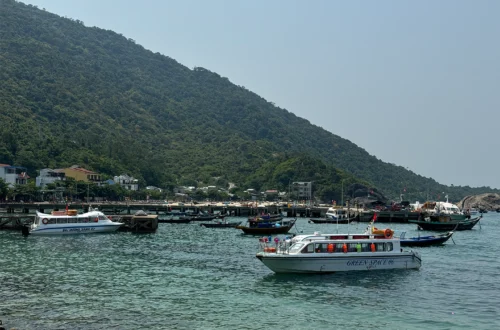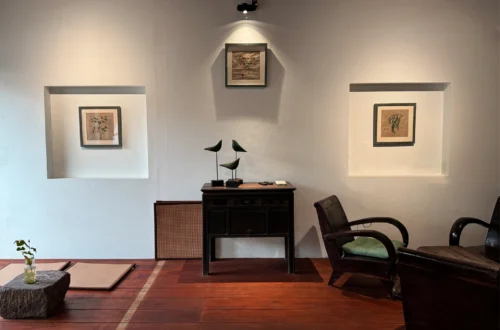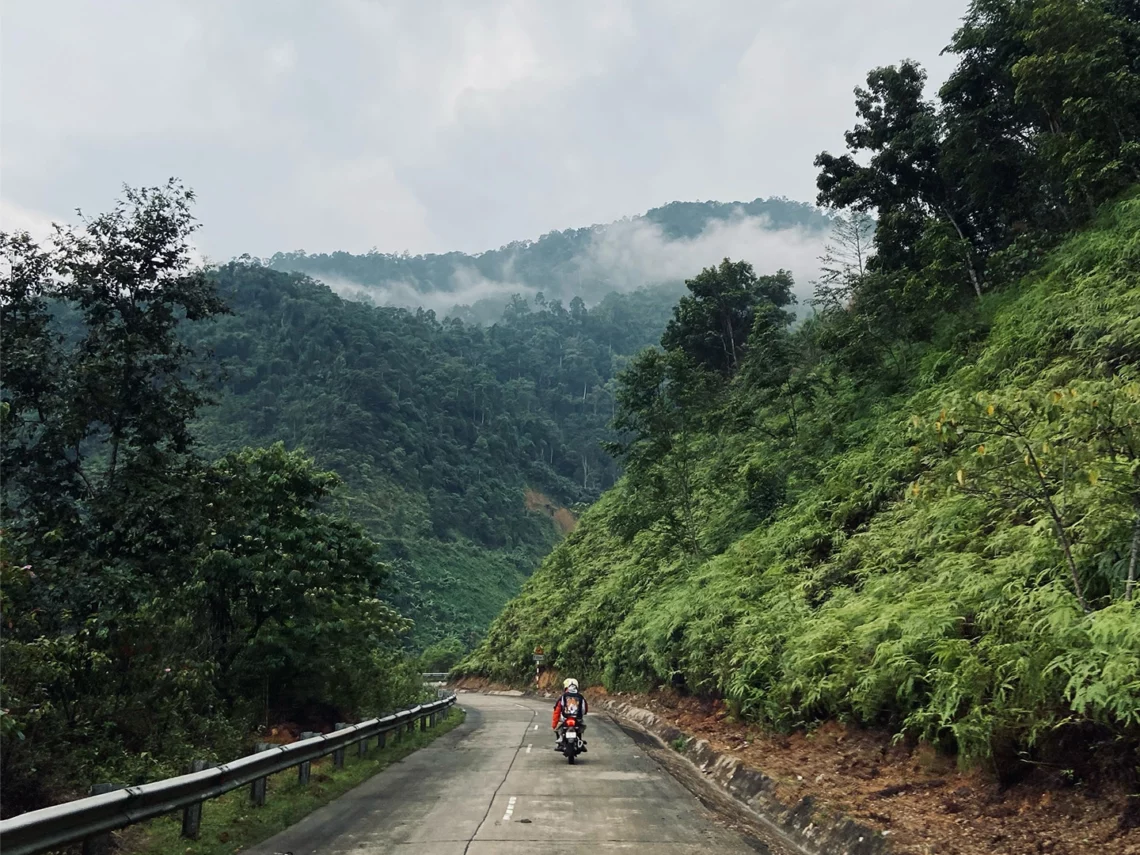
Ho Chi Minh Trail – Motorbike Tour along the Laotian border
For my trip to central Vietnam, I had planned a three-day-two-night adventure, between my time in Hue and Hoi An: a Ho Chi Minh Trail Motorbike Tour along the Laotian border. Since my driving capabilities aren’t up to par with rural Vietnamese roads (especially mountain roads) I found a driver who could take me on my biggest adventure in Vietnam to date.
This post contains affiliate links to things like tours and hotels. These help me earn a small commission at no additional charge to you. Every affiliate link is marked with a *.
Ho Chi Minh Trail Motorbike Tour – Day 1
My driver, Suu, picked me up about an hour after the agreed-upon time, with medication in hand he had picked up for me since I was suffering from a travel stomach. Those of you who have suffered through it as well, know that a motorbike trip without certain stops with toilets is the last thing you want to do. The medication helped though and after storing my small suitcase on the back of the bike, we started the tour.
Thanh Toan Bridge

Thanh Toan Bridge was our first stop, before embarking on the two-day-long Ho Chi Minh Trail Motorbike Tour. This tile-roofed bridge was originally built in 1776 and carefully restored in 2021. The bridge’s design allows for a breeze to flow through and cool the wooden benches on either side of the walkway. In the middle of the bridge is an altar in the wall, dedicated to Tran Thi Dao, who donated money to Thanh Thuy Chanh Village to build Thanh Toan Bridge.
Now that it has been renovated it is a picture spot as well and there was a group of photographers taking pictures of a young woman in a beautiful white and pink Áo dài on the other side when I took this picture.

Road Work and Plan B
After the short stop at the bridge, we went to a cafe where Suu showed me on the map that the route we had agreed on was closed off in Quang Tri. I marked it red up north. He suggested two options: A, stick with three days and two nights and take the lower red route or B, reduce it to two days and one night and only drive the green part of the route.
I called my Airbnb host in Hoi An and asked if I could check in a day earlier, he arranged it, and I chose option B.
Mountain Spring
The first stop on the actual tour route was at the end of a dirt road, at the foot of a mountain. My guide showed me how to follow a small unsecured path along a field up the mountain and then climb over some rocks to get to the spring. To look after the bike and our luggage he left me alone there and told me to just stay as long as I felt like it. On this tour I opted not to go swimming, but did take my shoes off to cool down a bit in the water.
After 20 minutes I carefully made my way back to him and met two locals along the way.
This beautiful mountain spring will not look like this for much longer, since at the bottom of the mountain they are building a station made from concrete and steel. I hope that they will build something that works with nature, like it has been done by locals with many natural springs in this area, rather than disrupt the natural flow and turn it into more of an artificial “tourist pool area.” Tourism brings money into an economy, but setting it up in a sustainable way for both nature and local residents is favourable for everyone.
Sao La Nature Reserve / Khu bảo tồn Sao La
The Ho Chi Minh Trail in this part of the country leads straight through Sao La Nature Reserve and runs along the Laotian border. It crosses into Laos at several points, but we stayed on the Vietnamese side. Within the nature reserve the roads are mostly made from cement plates and buffalos occupy most of them. During our drive through this area, we saw 5 people, for the entire drive.
Driving along this jungle road felt eerie, especially once it started raining and the fog and clouds got so thick that we couldn’t see further than 20 meters.
When it started raining Suu asked if I was okay or if we should stop. Even though we kept going initially, he stopped when the rain became heavier. We jumped off the bike and he produced two raincoats and rain trousers from inside the bike crate, which we put on.

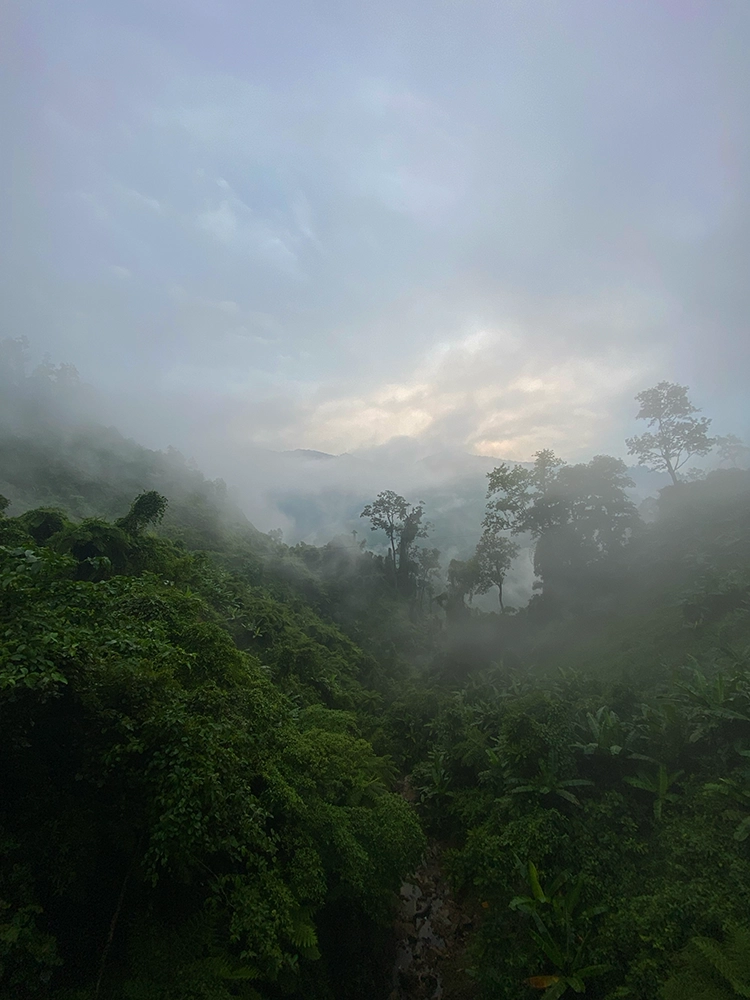
We got back on the motorbike, he kicked the pedal… and nothing happened. He tried again as the rain increased even more. Nothing happened. He got off the bike and tried to find the problem, but couldn’t. We walked up the nearest elevation and got back on the bike, he tried to kick the pedal as we were rolling downhill – still nothing.
At this point, despite the rain clothes, we were soaked, especially the shoes were squelching with every step.
Eventually, he did find what was wrong with the bike and we managed the last kilometre through the hills and drove straight into someone’s garage. The people there hurriedly pushed tables and stools out of the way of the motorbike and it looked like the woman was about to throw something at my driver’s head when he took his helmet off and she recognised him.
Then she still yelled at him and he translated for me that he used to come here a lot before COVID-19 happened and the borders were closed and I was the first traveller in three years.
For lunch, we had rice, morning glory and some green shoots fried with garlic, something eggy, boiled pork, very spicy mystery meat (neither of us could tell what it was, but it was tasty) and spicy pork.
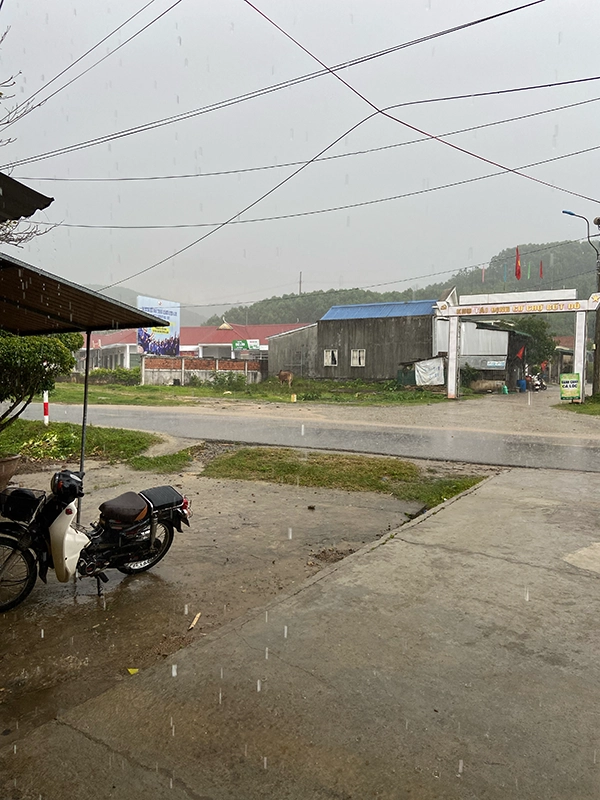
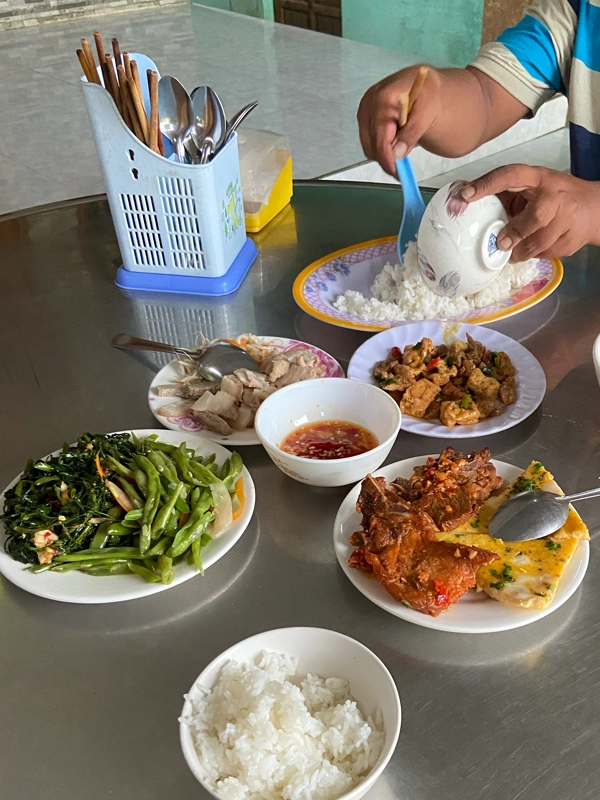
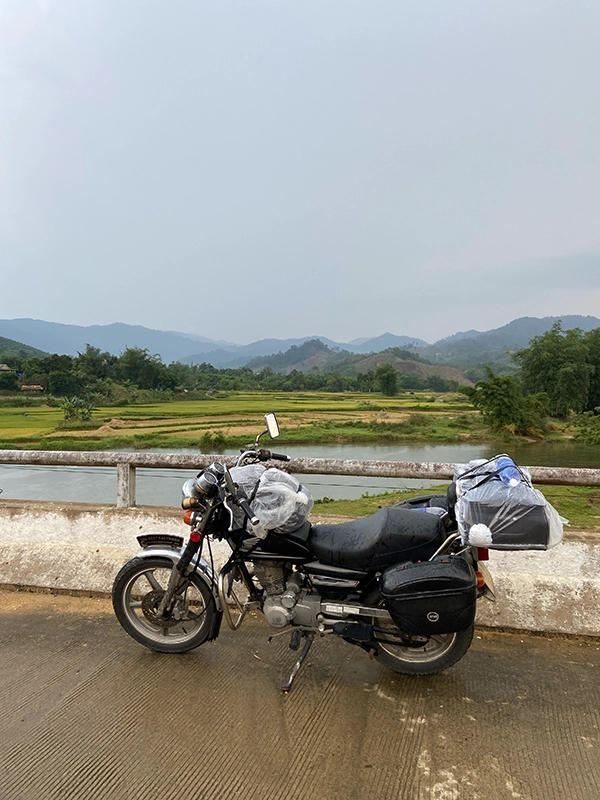
Since we were under the roof, we took off the rain clothes and I took off my shoes too, to wring them out, in the hopes that they would dry a little bit while we waited.
Was getting soaked in the rain while on a motorbike, to the point I could wring out my shoes, pleasant?
No.
Did it bring out beautiful colours and stunning clouds?
Absolutely!
Without this weather change, I would never have been able to take my favourite picture in Vietnam, which is the main picture of this post.
Prao
Once the rain had died down to a drizzle we continued on our way, this time keeping the rain clothes on to keep away the wind. Just as the sun began to set we arrived in the mountain town Prao. There a local family showed me to my room and I got to take a hot shower, before meeting Suu back downstairs for dinner. They gave us so much food I was wondering if other people were going to join us.
Suu translated for me and we talked to the owners of the guesthouse about how Covid had affected them and how tourists were slowly returning. At some point, the owner got a bottle of self-made liquor with some plant roots inside. I had a shot of it and both were impressed that I could drink it. Tien Duc, correctly: “tiếng Đức” was the only thing I understood of the following conversation between Suu and the old man.
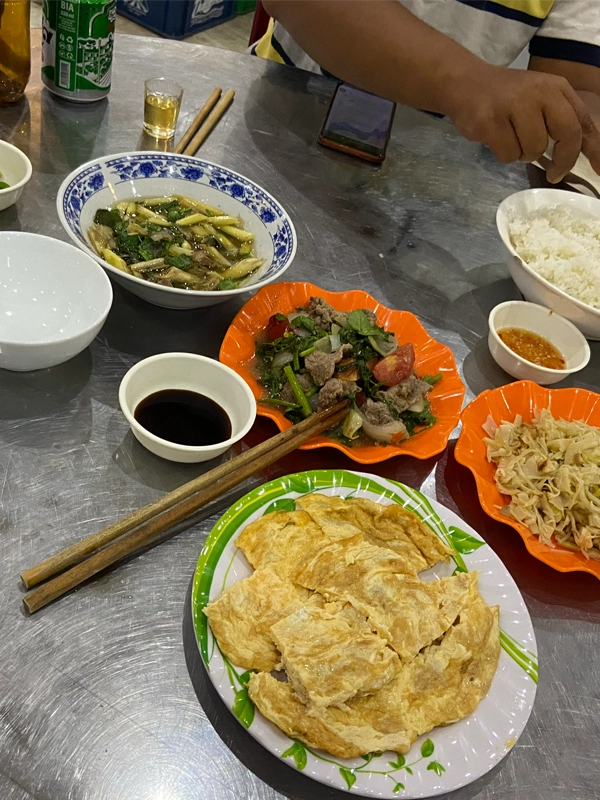
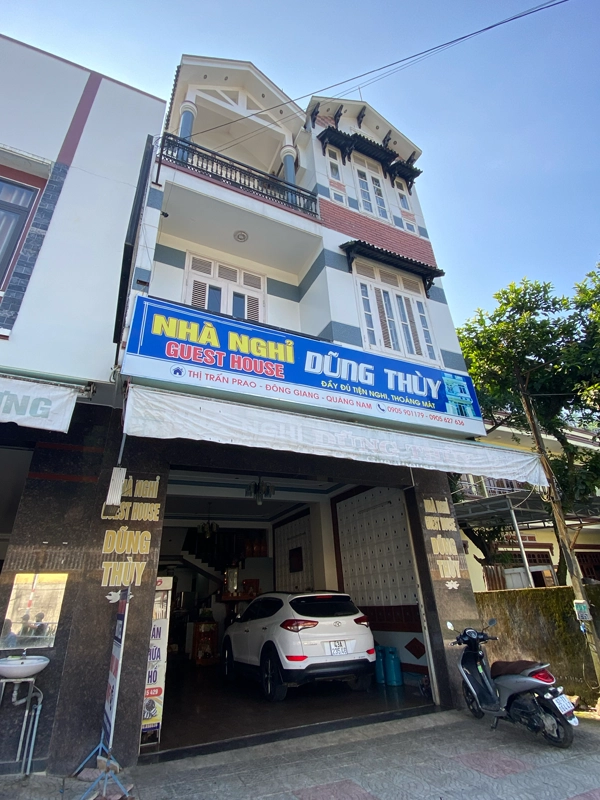
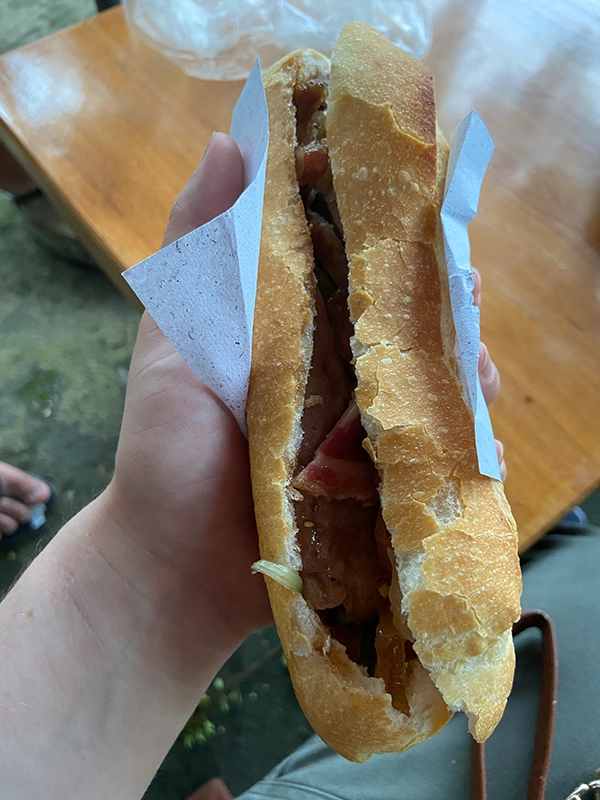
Ho Chi Minh Trail Motorbike Tour – Day 2
In the morning Suu picked me up at 6 AM, to get breakfast at a market. Since Prao is a small town in the mountains you will meet people from the surrounding villages who sell their wares, harvest and cattle on the market. When we walked past some people were busy chopping up an Ox on a tarp on the sidewalk.
I had the choice between noodles and Banh Mi for breakfast and as you can see above I went for the bread option, which I thought was the saver choice for another full day on the road.
Things along the road
This time the first stop was no important building or pretty photo spot, but a rubber tree with a harvest bowl attached. Suu showed me how the harvest of the rubber tree sap works and what it is used for. Rubber bands, hair ties, tires, sandals, etc. But he also explained that the trees need years to grow and it isn’t profitable enough to live off for most farmers. Most former rubber tree farms are now acacia tree farms since those trees only have to grow for a short time before they can be harvested for paper production.
About twenty minutes down the road we stopped again and Suu showed me a cinnamon tree. When you break off a leave and lick it, it tastes like cinnamon! Cinnamon sticks are made from tree bark, but the powdered version of the spice can be made from dried and ground-up leaves and is much cheaper.
Our final stop, but without getting off the bike this time, before reaching the Thu Bon River we saw a hill of pineapple plants. Is it just me or does pineapple grow like someone who wants to make fun of you tells you how pineapples grow?
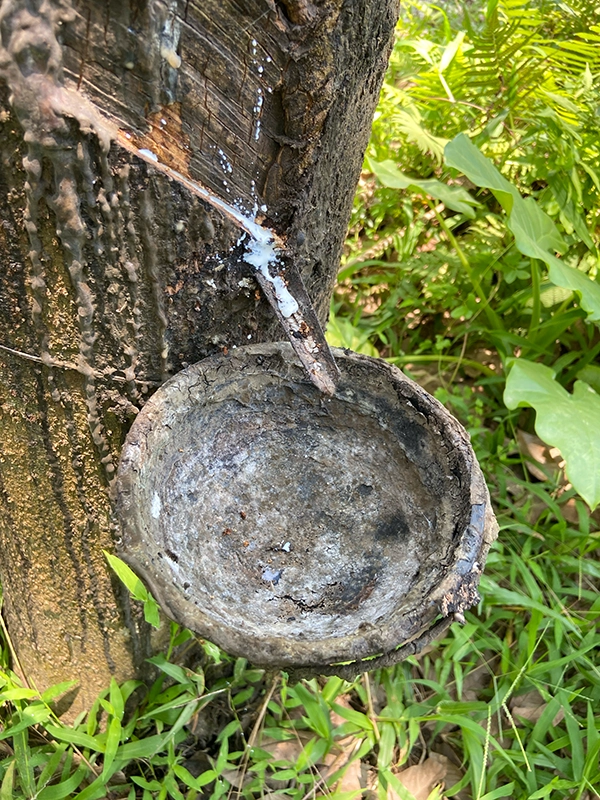
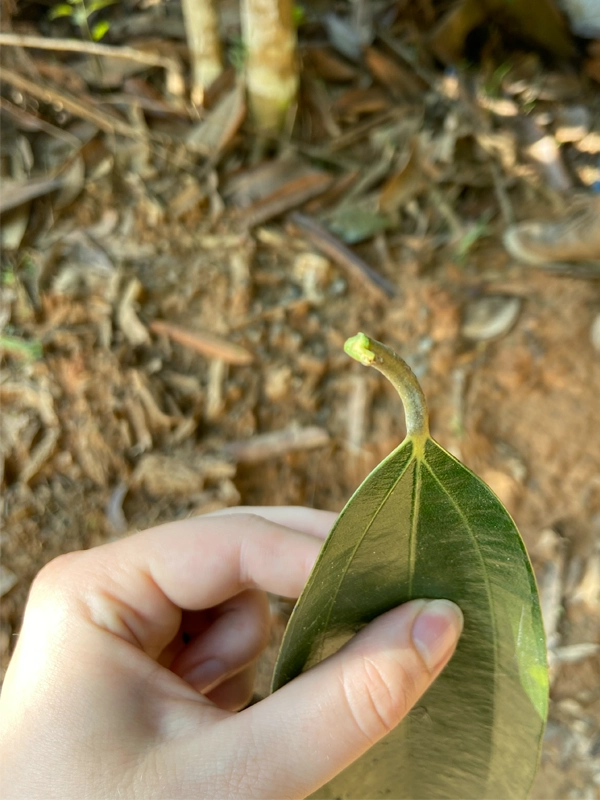
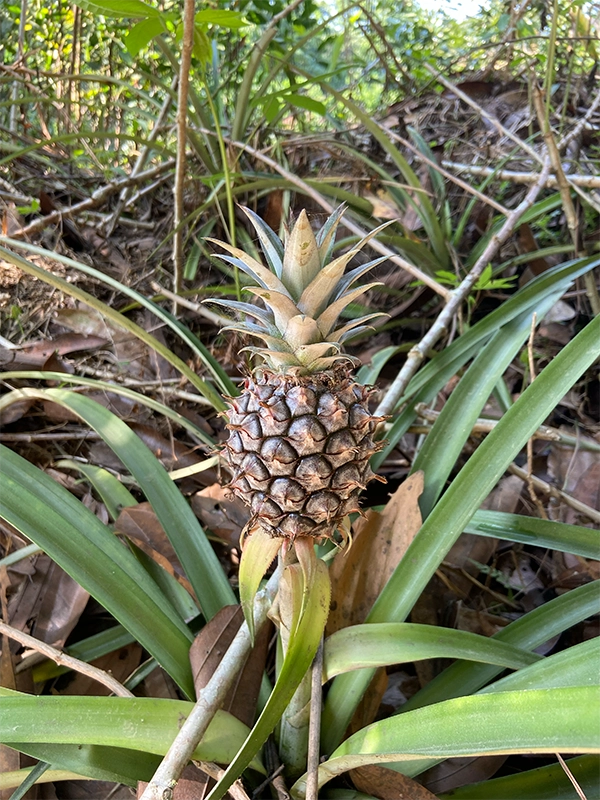

Thu Bon River Ferry
Crossing the Thu Bon River on a small ferry boat. The ferry lady was delighted to see us (another part of the country that isn’t dependent on tourism, but profits from it) and waved at the camera when she saw me filming. We drove onto the boat sideways and paid the toll while already on the river. I guess that’s one way to make sure everyone pays, with the threat of being thrown into the river right there. With us, another motorbike and two bicycles were ferried across.
Weaving of the Ta Oi
Each ancient tribe in Vietnam has traditional costumes, just like most cultures do. In central Vietnam, you can find several now-minority villages of different tribes.
We stopped at a Ta Oi village, of the subgroup Kan Tua, who are the only Ta Oi who still practice making these traditional garments. They have a workshop set up outside the village, where they show tourists and sell some products, but because of Covid, it has been closed down.
After Suu talked to some locals on the street a family kindly invited us to their home and showed me their weaving technique. While we were there two men walked past in traditional hunting gear, who looked very confused about what outsiders were doing in the village.
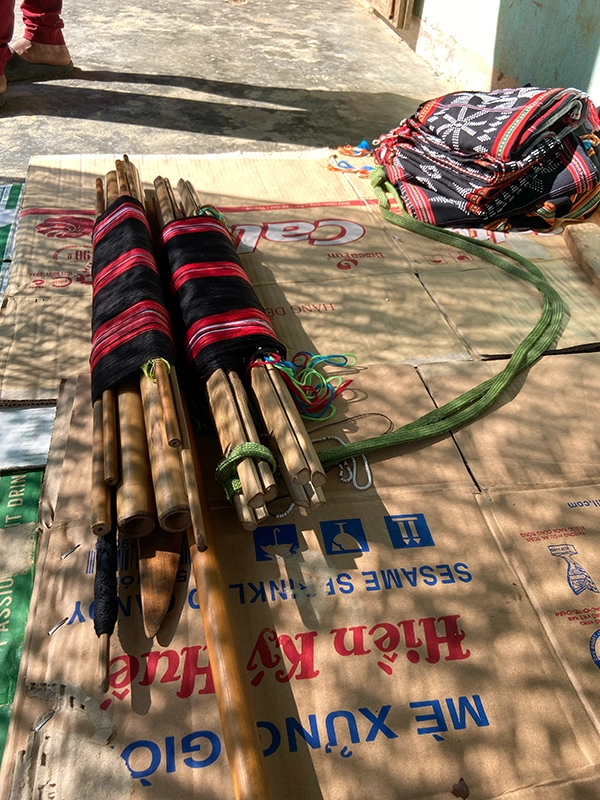
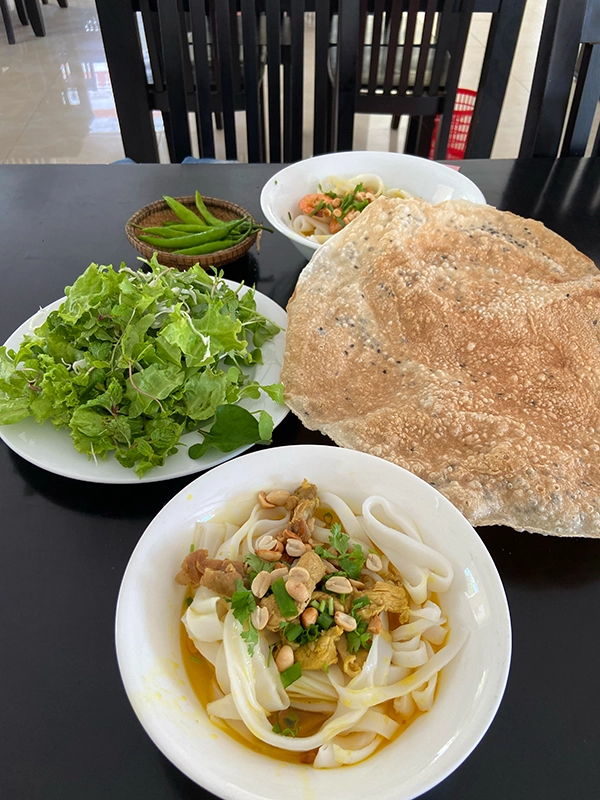
Mi Quang lunch near My Son Sanctuary
It was a very surreal experience to eat in a giant dining hall, with only two people. My guide explained that this is usually where the big tour busses stop, then the people come in in a giant hoard, they eat everything, make an almost deafening noise, throw the trash everywhere and then they are gone as quickly as they came… like termites.
That made me think a lot about our impact as travellers or tourists: while tourism can bring wealth into an economy, it has bad sides as well.
But back to the food: Mì Quảng are rice noodles in a delicious, strong broth, in this case with pork, shrimp and peanuts, served with a giant fried rice cracker and a plate of herbs and greens.
Broom Factory
The last stop on the tour was a family-run broom factory, well, if you can call a small workshop inside a garage a factory.
Their colourful brooms are made from bamboo and dried grass. First, the grass is laid out to dry. The bamboo is wrapped in heated plastic to make it more durable, the a forked metal plate is screwed into the top. The dried grass is sorted and sewn onto the metal fixture, then brushed to make the broom more uniform.
These brooms are very popular in Central Vietnam and you can find at least one in every house.
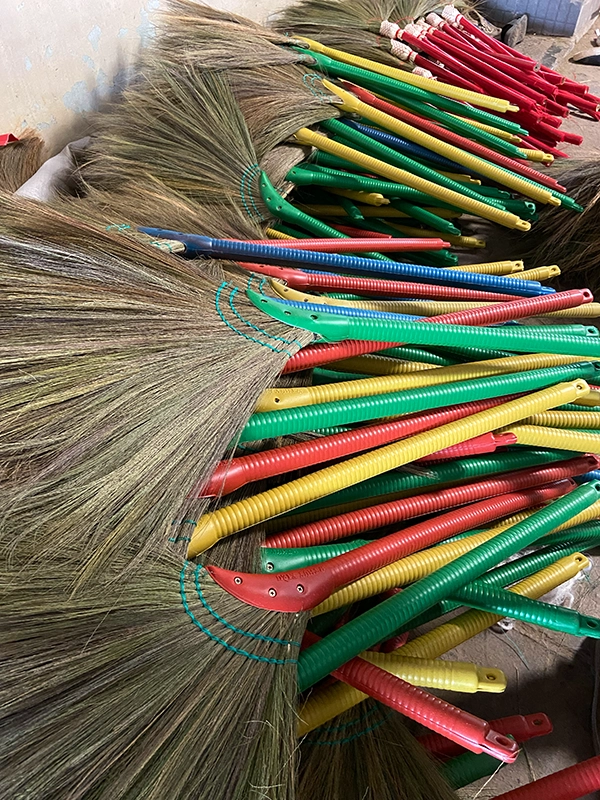
Map of my Ho Chi Minh Trail Motorbike Tour
How to read the map: On the first layer I marked important places we visited. On the second layer, I marked the route we took (as well as I remember) and then I had to add a third layer because the tiny wooden boat ferry isn’t a viable option according to Google Maps 😀
You are currently viewing a placeholder content from Google Maps. To access the actual content, click the button below. Please note that doing so will share data with third-party providers.
More InformationBooking a Ho Chi Minh Trail Motorbike Tour
There are many, many “Easy Riders” in Vietnam, all claiming to be the best and all using this name to benefit from good experiences with others.
However, not all of them are trustworthy and not all of them will make you feel at ease. The guide I had on this tour was excellent: a great motorbike driver, who knew the locals and made sure I was safe. The one I went with during my Hai-Van-Pass trip constantly tried to sell me more stuff.
The people I went with* took down the option to book on TripAdvisor and their Website is not online at the moment. Otherwise, I would highly recommend them. Everything was included in the tour price: gas, the driver’s wage, entry to every place we visited if charged, the room in the guesthouse in Prao, breakfast, lunch, dinner and a lot of bottled water.
When you want the relative safety of booking with a bigger company and through a booking platform you can look for trips on Tripadvisor* (Yes, I pre-selected some tours, I didn’t just link a well-known platform) or book this one on Viator*.
But if you want to support locals directly (because let’s be real, all of those platforms take between 10 and 25% commission) you can check out @nguyentours_com on Instagram.




